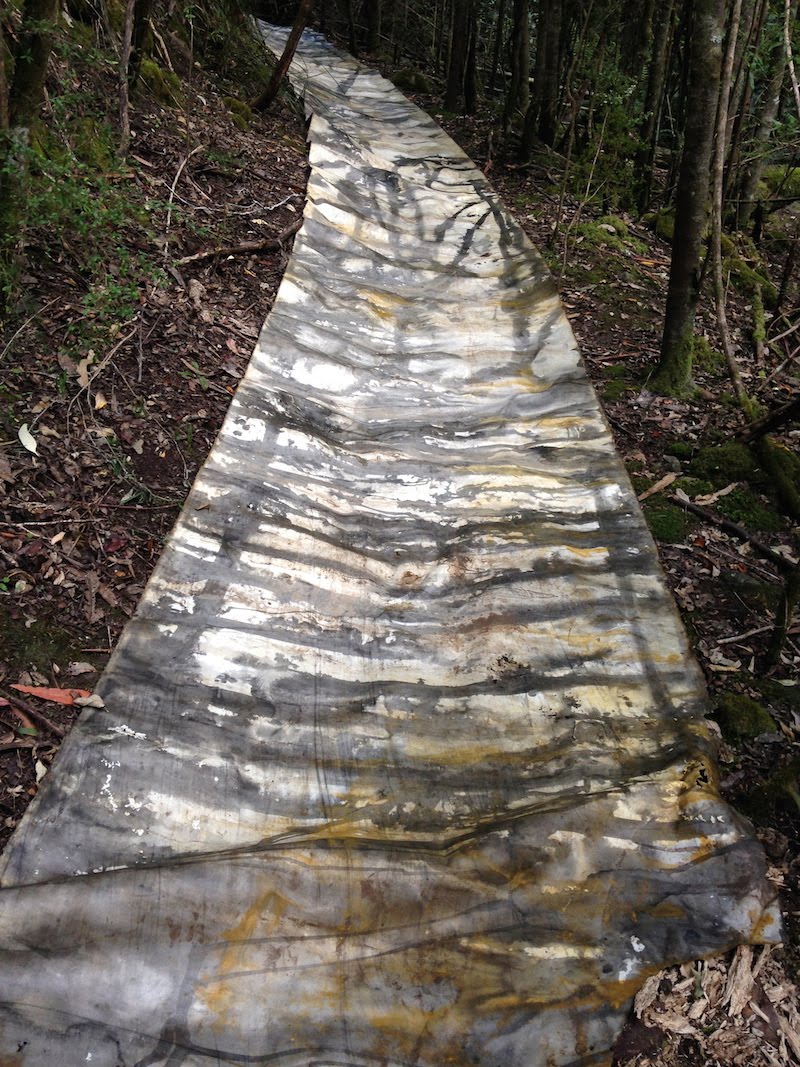| Cartwright Creek waterhole |
Membrane of Memory explores a site on Mt Nelson in Tasmania. It is called Truganini Track in commemoration of a significant Aboriginal woman in Tasmania. I continuously revisit this site that follows Cartwright Creek, a meandering stream dotted with waterholes. Once again I take a roll of Rives BFK out to the site in order to learn about the many layers of history embedded in the land and also to find where I stand in this place.
Our visual conventions and our will or desire to see
form, separates the mark from the ground. This becomes the ‘significant’ figure and the
‘insignificant’ ground.
 |
| Roll of paper, after being in the water hole |
This interaction between the membrane shifts the work
away from ‘perception’ and our knowledge of our place in the world, where our
eye in our vertical body links directly to our brain and into ‘sensation’. I am being pulled into the horizontal field of the ground and begin to learn of the many different operations that occur in the world around me.
 |
| Membrane with previous Sumi ink drawing and a new Eucalyptus ink layer |
By placing the paper directly on the land I use it as
a mnemonic device to record the traces of events above and below the
surface. My aim is to test the ground and the materials to
address the psychological depths of settler Australians, to see if I can
further understand what I have grasped from the work of Aboriginal Australian Art and
implement it in a new visual language.
 |
| Edge of the membrane |
The material of the paper takes on further meaning through stains and marks above and below the surface. The ground of the paper loses its neutrality, its passive acceptance of meaning, and becomes active in the forming of meaning.
I continuously revisit the track over weeks, bringing the roll with me to acquire new layers. The realm between track and trees that I walk
though has its own atmosphere, its own conditions and its own history that can
be glimpsed and pondered on as I travel through.
The track is where I am gaining knowledge, it is
both the testing ground and the source of the knowledge. The anthropologist Timothy Ingold writes about the track as an integral part of our knowledge base, it is the many paths we travel that we acquire experience and gain insights. He points out that as we walk we are also in the world that surrounds us. The
weather influences the ground we walk on, and as we walk we breathe with every
step, we walk in both “the air and the on the ground” He writes
 |
| Membrane showing the 'gold side' |
In order to acknowledge the membrane quality of the paper, I begin to work on both sides of the roll. The paper becomes transformed by the materials that become ingrained from either side. I use yellow ochres along with red ochre, charcoal and eucalyptus ink in response to the glimpses of earth I see below the surface.
 |
| Shell fossils in the rock around the waterhole |

No comments:
Post a Comment